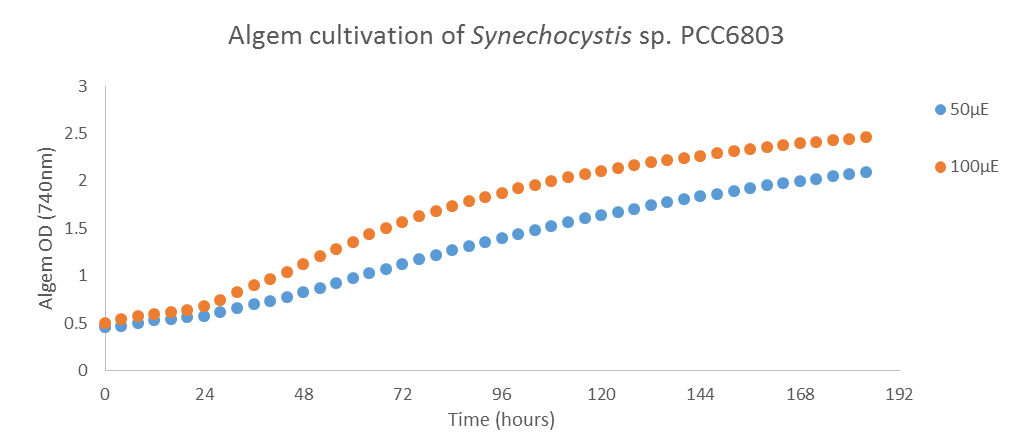Cultivation of Synechocystis sp. PCC6803 - ALG App010
algenuity • May 8, 2017
Background
Synechocystis sp. PCC6803 is a unicellular freshwater cyanobacterium commonly employed as a cyanobacterial model system. It is capable of both photo- and heterotrophic growth making it useful for studying photosynthetic processes, and has a well defined circadian clock. Synechocystis sp.
PCC6803 is naturally competent allowing direct uptake of recombinant DNA, and has a well defined molecular toolbox including a sequenced genome. There has also been interest in the use of Synechocystis sp.
PCC6803 for biofuel applications, both in itself and as a model for other third generation biofuel platforms.
Experimental Design
A Synechocystis
starter culture was inoculated from solid medium into BG11 medium and cultivated at 40μE, 25°C to late stationary phase. The culture was then diluted ten fold and split to give two equivalent 400ml cultures for growth in the Algem. The profile used consisted of continuous white light at either 50 or 100μE, at 26°C with mixing at 120rpm. CO2 was provided on a pH modulated basis, with the pH kept level at 7.5.
Results
Synechocystis
grew well under both conditions, with faster growth and a higher final optical density seen at 100μE.
Figure 1 - Algem growth profile for Synechocystis sp. PCC6803 grown at 26°C and pH 7.5 with either 50 or 100μE white light
Discussion
As expected, the higher light intensity resulted in more productive log phase growth and a higher stationary phase culture density. Under phototrophic conditions growth is often limited by light intensity, particularly at higher cell numbers where self-shading becomes a factor. Now that successful cultivation of Synechocystis in the Algem has been demonstrated, the logical next step would be to run ramped light an temperature profiles to establish optimal conditions for this organism.



